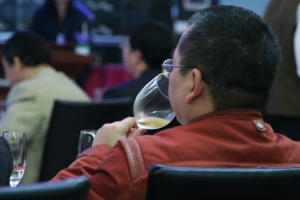The Indonesian Wine Market: Exploring Wine Export Opportunities Beyond China
March 28, 2012 3 Comments
The Australian wine industry was for many years concerned about export markets eroding in the traditional wine markets in Europe and North America, particularly as a combination of rising Australian Dollar, Increased competition from other “New World” wines from South Africa, South America and North America started to compete at the lower price point with which Australian wines had been successfully marketed in the UK and Europe. This challenge for shelf space, market share and profits was further impacted by the growth in grape output, and consolidation of wine companies in Australia through companies such as Treasury Wines (Formerly Southcorp, and Fosters) and Constellation Wines which standardised the Australian wine industry, and helping to entrench Australian wine industry perception of international export markets as low-end consumers. This industry perception and attitude was a short-sighted and a recipe for disaster. Something had to change, to snap the thinking of the Australian Wine industry.

The Indonesian Wine Market is open for business. Ignore this market to your detriment. The time is ripe for a new investigation of the wine export opportunities in Indonesia
In recent years there has been an explosion of wine sales/exports/ and investments in China. There is undoubtedly a great opportunity in China as the 1.3 billion people start to develop a taste for wine. This is not to say however that wine is saleable to all of the 1.3 billion people, as the favoured alcoholic drinks are still beer and spirits ( rice and barley wine drinks such as MaoTai, Beiju etc). Wine consumption is rising, and taping into the 5% of the population that currently drink wine is a boon for the Australian wine industry, and many successful Australian wineries are now exporting good and profitable volumes into China. There is of course a growing Chinese Wine industry, which is increasing in quality and exposure throughout China. This will likely become a competitive force in the future, for which Australian Wine Companies will need to strategically prepare. So what alternatives are out there in Asia?
There are obvious opportunities throughout South East Asia, in markets such as Vietnam, Thailand, and Singapore. These markets are in the main receptive to wine, and Australian Wine companies should be looking to export into these markets. However there is another market that Australian and other Western Wine companies overlook – Indonesia. There is broad perception that Indonesia as a predominantly Muslim country holds no opportunities for Australian wine. This is a short-sighted view in my opinion and Wine Companies need to broaden their perspective.

A Wine Store in Jakarta is not uncommon, and increasingly provide premium wine to a rapidly developing domestic wine market.
Indonesia is a challenging place to sell wine, not least because of the Muslim cultural influence. There is however, a large opportunity emerging in Indonesia for wine sales in the right market segment. Opportunities in bulk wine and low-cost wine sales to Indonesia are non-existent. These price points do not work politically for Indonesia. This is not the same for premium wine sales, for the US$15-50 price point on an Australian wine shelf . In Indonesia these wines would be sold at an added premium of between $40-150. People pay for these wines, and they are consumed by the emergent middle class in cities like Jakarta, and are sought after in restaurants and Hotels across Indonesia. It must be remembered that Indonesia is a moderate Muslim country, and there is no ban on alcohol sales. There is however some restrictions on the number of importers allowed to bring in wine. My main message here is that, Indonesia is a market of opportunity for the Australian wine industry, and it should not be ignored out of hand.
If your company is looking to tap into the increasing demand for wine in the Indonesian market, please feel free to send me an email (nathan@asiaaustralis.com), and we can have a chat about how AsiaAustralis can assist your company meet the needs of the Indonesian market. Alternatively come along to the Australia Indonesia Business Council Business Forum – “Identifying opportunities for primary industries in the Indonesian market” in Adelaide on Friday 30th March, to learn more about the opportunities for food exporters in Indonesia.



